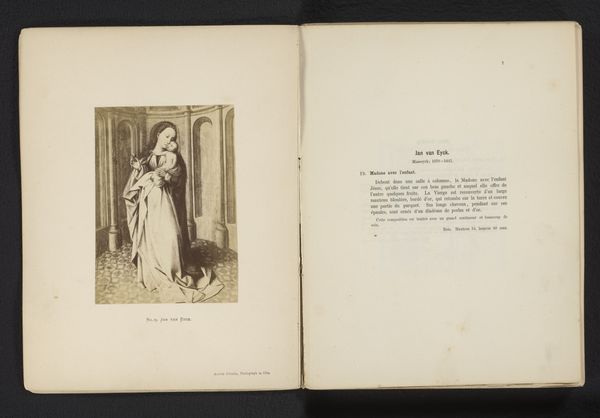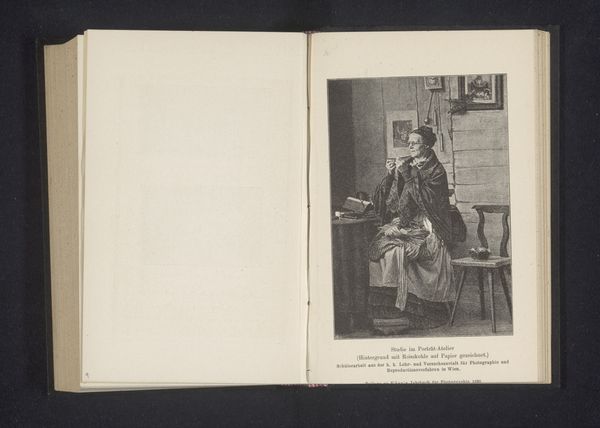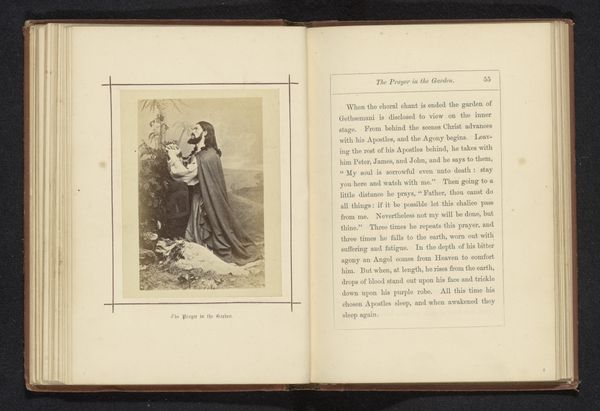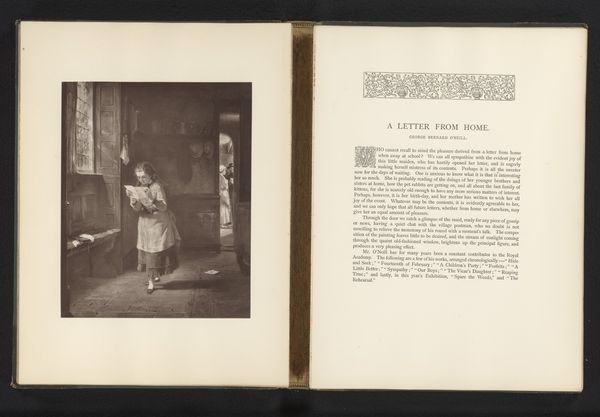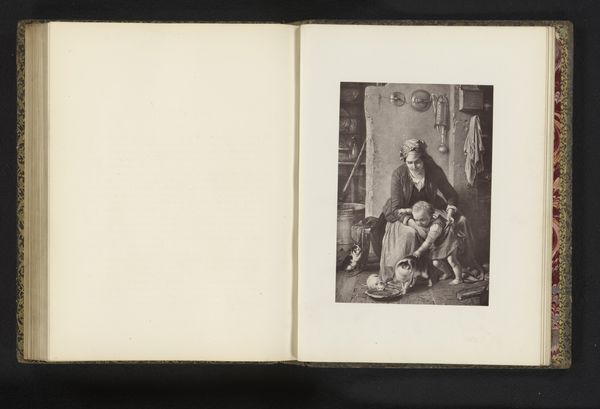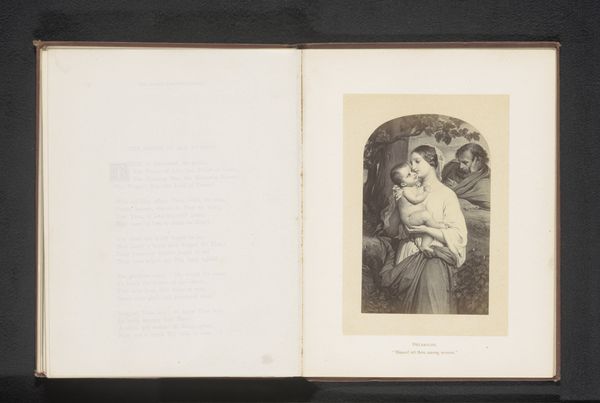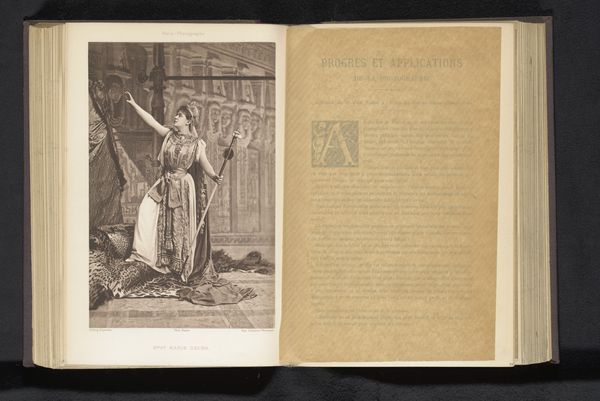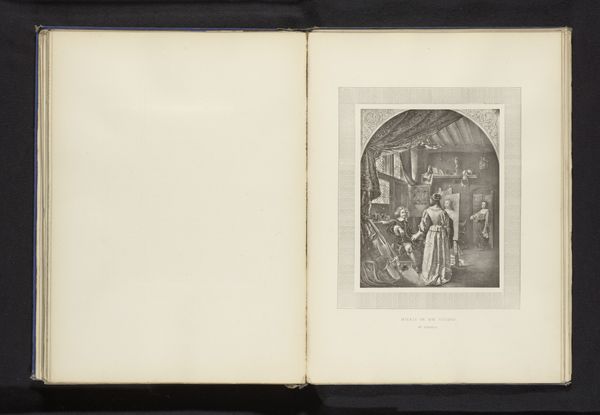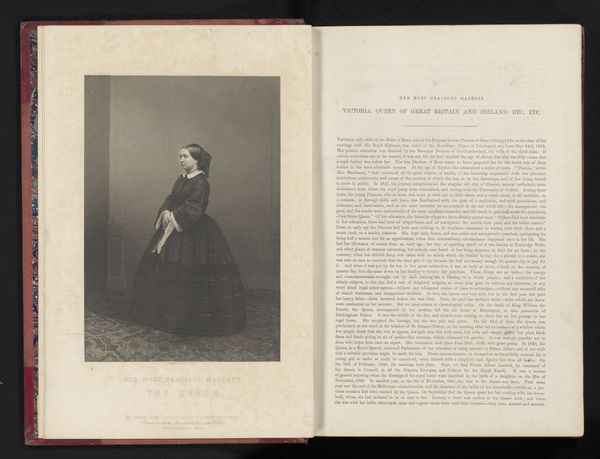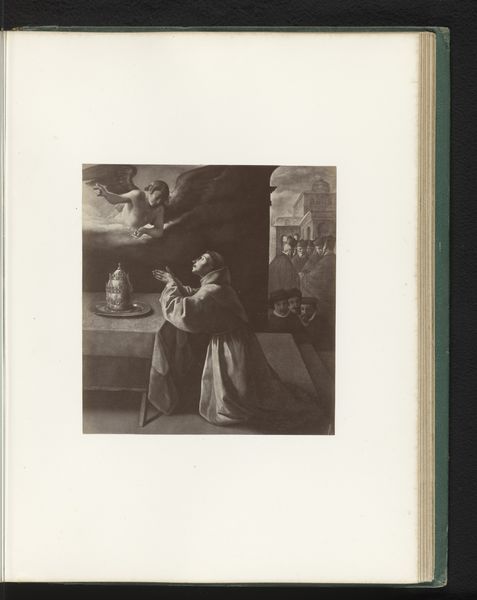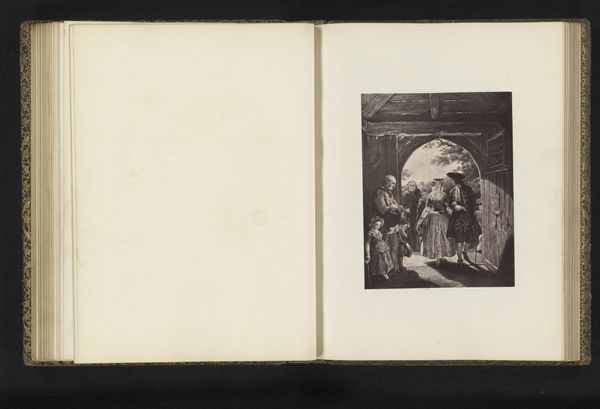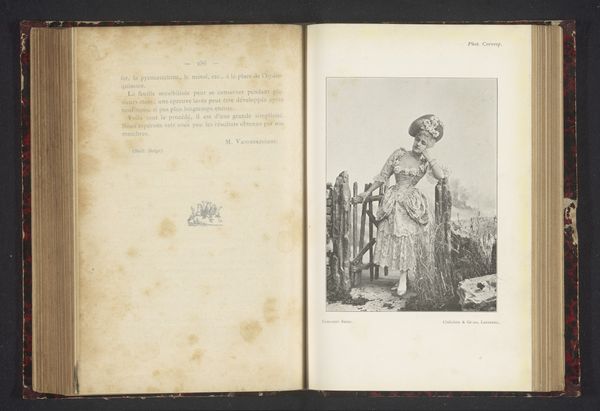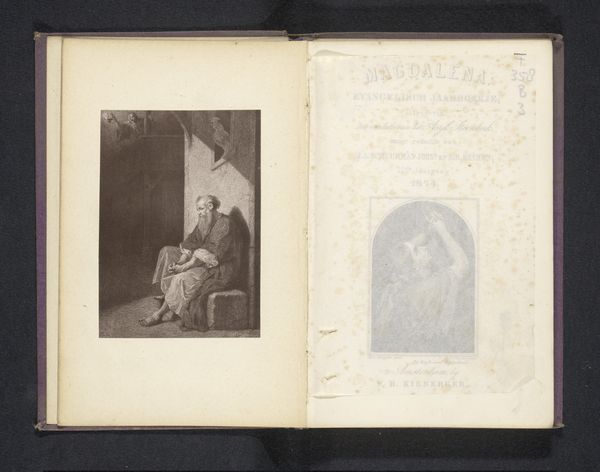
print, engraving
#
narrative-art
# print
#
history-painting
#
engraving
#
realism
Dimensions: height 124 mm, width 101 mm
Copyright: Rijks Museum: Open Domain
Curator: Evangeline, a print dating from before 1891 by an anonymous artist, offers us a glimpse into 19th-century narrative art. Editor: The somber tones immediately strike me. The lone figure, shrouded in what appears to be a nun’s habit, exudes a sense of profound loss and isolation. The engraving seems meticulously rendered, judging by the textures of the fabric. Curator: Indeed. As a print, its reproduction allowed for widespread distribution, furthering the cultural reach of the story of Evangeline, a fictional Acadian woman separated from her betrothed during the Great Upheaval. Think about the socio-political implications: the exile of the Acadians and the subsequent romanticized portrayals in popular culture. The text printed on the same page includes information about the production, highlighting the Electro Light Engraving Co. Editor: Right, so we need to also look at the mode of production—electro-light engraving as a then cutting-edge industrial method. Were these engravings meant for mass consumption, perhaps illustrations in books or magazines about the romanticized vision of tragic female characters? We might want to think about the cultural consumption surrounding these characters as commodities of their own. Curator: Exactly! The medium reinforces its accessibility to a broad public. Its appearance in a German publication "Eder's Jahrbuch für Photographie 1891", also speaks to transnational fascination with the subject. The figure appears posed in what looks like an austere church, accentuating her piety. The scattering of flowers in the foreground could symbolize lost love and innocence. How does its portrayal function as propaganda or sentiment? Editor: Well, thinking of materials and context – perhaps it offers viewers a lens to contemplate exile through the eyes of a female sufferer. By highlighting this romantic narrative, publishers were cashing in on feelings connected to themes of diaspora through material and textual production, thus impacting ideas on femininity, dispossession, and spiritual solace. Curator: And its accessibility meant that such a message reached potentially large audiences at the time. This speaks volumes about how history, especially regarding marginalized communities, is packaged and sold. Editor: Absolutely, and focusing on such production aspects shows just how intertwined labor, grief, and imagery can be when brought together materially. Curator: Thinking about how Evangeline's narrative became embedded in the 19th-century psyche opens a new way to ponder over how institutions of art, dissemination and commerce intersect, providing nuanced commentary. Editor: Agreed; a stark reminder of how even seemingly simple prints participate in complex cultural and material ecosystems.
Comments
No comments
Be the first to comment and join the conversation on the ultimate creative platform.
